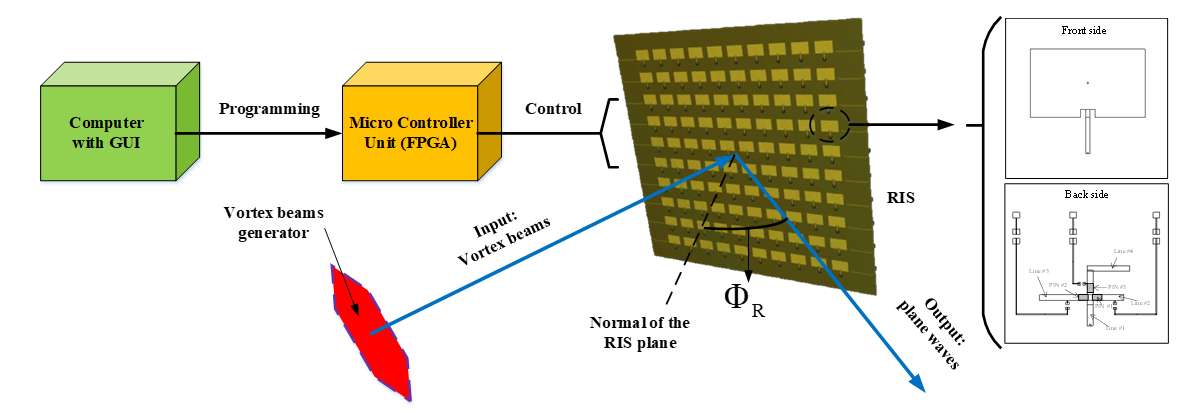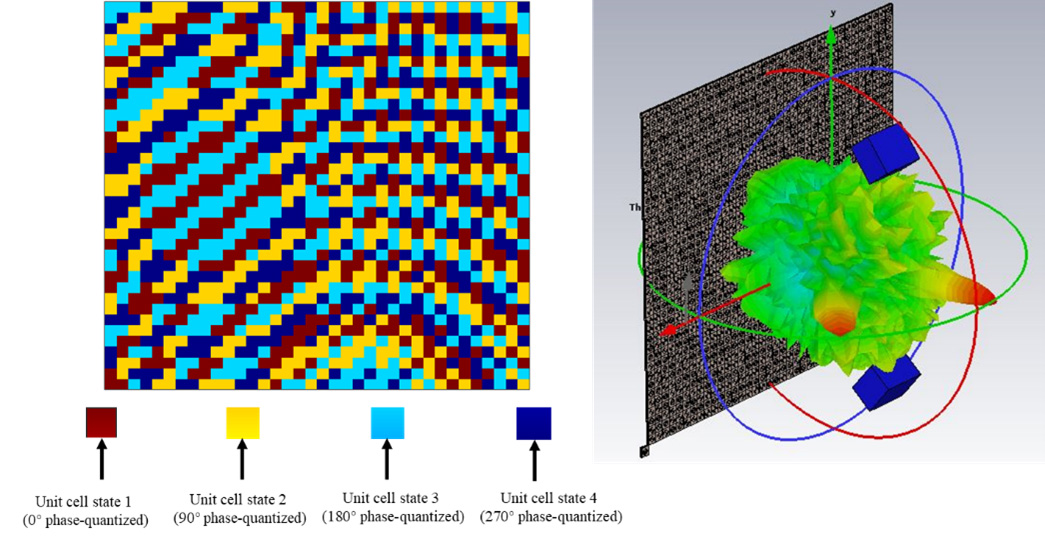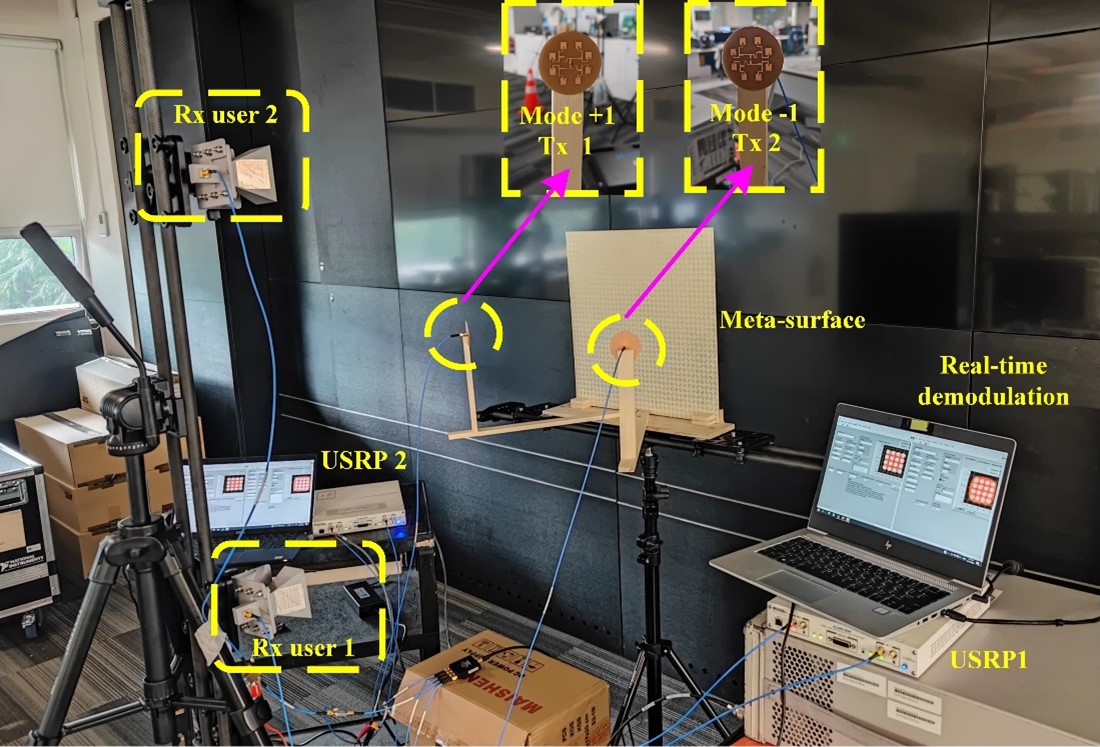
Reconfigurable Intelligent Surfaces (RIS) System Converts Multi-Mode Vortex Beams to Independent Plane-Wave Beams
Synopsis
This invention presents a system using reconfigurable intelligent surfaces (RIS) to convert multi-mode vortex beams into independent plane-wave beams, enhancing wireless communication by increasing multiplexing and spectrum efficiency, especially in line-of-sight scenarios. It involves both hardware and software improvements, supporting advanced applications in smart homes, IoT, and mobile communications.
Opportunity
The wireless channel between the RIS and the base station is usually defined as the Line-of-Sight (LoS). The low-rank characteristic of the LoS channel greatly limits the diversity and multiplexing performance of the RIS-aided wireless communication system. With limited scattering in the propagation environment, the LoS channel responses can be highly correlated, leading to a severe decrease in the degree of freedom.
This invention proposes a RIS relay-forwarding communication system based on multi-mode vortex beams, which aims to improve the multi-stream transmission capability under LoS channels. The low correlation between different vortex modes brings additional spectrum efficiency. The transmitter generates different vortex modes and directs beams to the RIS, which converts vortex beams to plane waves for user receiving. The entire control process is completed by programming on FPGA. The control signal generated by the FPGA is connected to the RIS through the PCB circuit board, and the phase distribution of the whole RIS board is controlled according to the phase adjustment algorithm. This system provides innovations both in hardware design and software algorithm, potentially offering efficient communications services to smart homes, automated factories, supermarkets and other IoT applications.
Technology
In this vortex beam-based RIS communication system, the transmitter generates different mode OAM beams and directs them to the RIS position. The RIS converts vortex beams to plane waves for user equipment reception. This patent is the first to propose this communication scheme. The RIS can convert multiple vortex beams to multiple plane waves separately at the same time. This function is realised by the special design of unit cells and phase distributions of the RIS board. The control signal from the FPGA, connected to the RIS via a PCB circuit board, manages the phase distribution according to the phase adjustment algorithm. One RIS can handle signals from more than one base station concurrently. It can be controlled by multiple transmitters independently, receive each base station’s vortex beams, convert them to independent plane wave signals, and forward them to different users separately. This invention spans both hardware and software levels.
 Figure 1: Schematic diagram of a system for using reconfigurable intelligent surfaces (RISs) to convert multiple modes vortex beams to independent plane-wave beams for wireless communications.
Figure 1: Schematic diagram of a system for using reconfigurable intelligent surfaces (RISs) to convert multiple modes vortex beams to independent plane-wave beams for wireless communications.
 Figure 2: The arrangement pattern on the RIS based on 4 phase-quantised unit cells, which can convert vortex beams to plane waves independently through the RIS board.
Figure 2: The arrangement pattern on the RIS based on 4 phase-quantised unit cells, which can convert vortex beams to plane waves independently through the RIS board.
 Figure 3: Experiment prototype of the meta-surface-aided 2-pair multi-node communications.
Figure 3: Experiment prototype of the meta-surface-aided 2-pair multi-node communications.
Applications & Advantages
Main application areas include mobile cellular communications, device-to-device communications in IoT scenarios and indoor near-field communications.
Advantages:
Leverages intelligent surfaces to enhance wireless communication
Converts multi-mode vortex beams to independent plane-wave beams, improving spectrum efficiency
Enhances multiplexing capabilities, especially in line-of-sight channels
Supports advanced applications in smart homes, IoT, and mobile communications
Involves both hardware and software advancements for efficient deployment



.tmb-listing.jpg?Culture=en&sfvrsn=57e7d9a3_1)
.tmb-listing.jpg?Culture=en&sfvrsn=462ec612_1)










